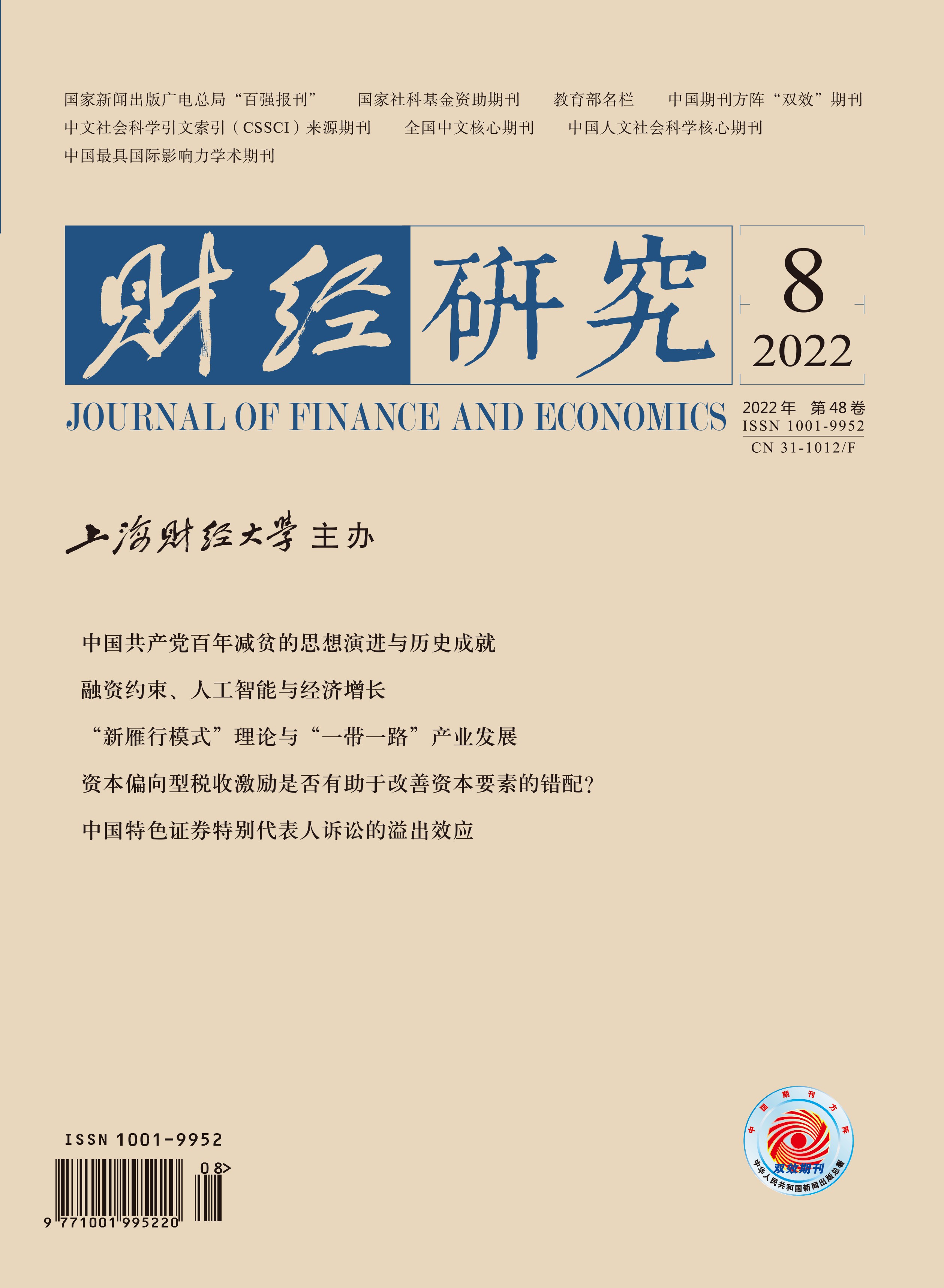在全球生产网络背景下,传统的“雁行”理论难以合理解释各国产业发展的新特征。为此,文章以新国际分工体系为背景,提出产业发展的“新雁行模式”,在溯源传统“雁行”理论的基础上,以贸易合作和产业转移为切入点,对“新雁行模式”进行理论分析,并对“一带一路”产业发展的“新雁行模式”进行实证检验。研究发现:(1)“一带一路”产业发展具有梯次发展、依序起飞的“雁行”形态,呈现出“大雁群”嵌套“小雁群”和“多级雁行”格局,“首雁效应”并非只来源于单个国家。(2)“一带一路”沿线国家的生产效率提高、产业发展表现出多元化、高级化趋势,中高技术和高技术产业的比较优势增加,部分新兴市场国家实现了“跨越式”发展,在高技术产业上的比较优势主要源于低附加值环节。(3)“一带一路”倡议提出后,区域内比较优势单向转移明显增加,但是对沿线各国产业结构调整和优化升级的促进作用尚未充分显现。因此,需要发展“一带一路”生产网络,培育“多级雁行”格局,增强我国高质量发展的“领头雁”功能,推进区域产业发展的“新雁行模式”。
摘要
参考文献
3 陈俊营,方俊智. 产品内分工视角下全球制造业生产网络的演化特征[J]. 世界地理研究,2020,(4):792−803. DOI:10.3969/j.issn.1004-9479.2020.04.2019007
4 黄群慧, 韵江, 李芳芳. 工业化蓝皮书: “一带一路”沿线国家工业化进程报告[M]. 北京: 社会科学文献出版社, 2015.
6 刘友金,胡黎明. 产品内分工、价值链重组与产业转移−兼论产业转移过程中的大国战略[J]. 中国软科学,2011,(3):149−159. DOI:10.3969/j.issn.1002-9753.2011.03.016
8 山泽逸平. 亚洲太平洋经济论−21世纪APEC行动计划建议[M]. 范建亭, 施华强, 姜涛译. 上海: 上海人民出版社, 2001.
10 张茉楠. “一带一路”将构筑以我国为首的新雁阵模式[EB/OL]. http://www.nbd.com.cn/articles/2016-04-01/995167.html, 2016-04-01.
11 Cao H J, Zhang H, Li J, et al. Intra-product specialisation and the innovation ability of the high-technology industry in China[J]. Science, Technology and Society,2017,22(1): 144−164. DOI:10.1177/0971721816682826
12 Dowlinga M, Cheang C T. Shifting comparative advantage in Asia: New tests of the “flying geese” model[J]. Journal of Asian Economics,2000,11(4): 443−463. DOI:10.1016/S1049-0078(00)00070-1
13 Gereffi G. International trade and industrial upgrading in the apparel commodity chain[J]. Journal of International Economics,1999,48(1): 37−70. DOI:10.1016/S0022-1996(98)00075-0
14 Kalotay K. The European flying geese: New FDI patterns for the old continent?[J]. Research in International Business and Finance,2004,18(1): 27−49. DOI:10.1016/j.ribaf.2004.02.006
15 Kojima K. The “flying geese” model of Asian economic development: Origin, theoretical extensions, and regional policy implications[J]. Journal of Asian Economics,2000,11(4): 375−401. DOI:10.1016/S1049-0078(00)00067-1
16 Kwon T, Ryou J W. Global value chains of east Asia: Trade in value added and vertical specialization[J]. Asian Economic Journal,2015,29(2): 121−143. DOI:10.1111/asej.12051
17 Martincus C V, Carballo J. Is export promotion effective in developing countries? firm-level evidence on the intensive and the extensive margins of exports[J]. Journal of International Economics,2008,76(1): 89−106. DOI:10.1016/j.jinteco.2008.05.002
18 Okita S. Special presentation: Prospect of pacific economies[A]. The fourth pacific economic cooperation conference[C]. Seoul: Korea Development Institute, 1985.
19 Ozawa T. The (Japan-born) ‘flying-geese’ theory of economic development revisited – and reformulated from a structuralist perspective[J]. Global Policy,2011,2(3): 272−285. DOI:10.1111/j.1758-5899.2011.00093.x
20 Rana P B. Shifting comparative advantage among asian and pacific countries[J]. International Trade Journal,1990,4(3): 243−258. DOI:10.1080/08853909008523694
21 Yeung H W C, Coe N M. Toward a dynamic theory of global production networks[J]. Economic Geography,2015,91(1): 29−58. DOI:10.1111/ecge.12063
引用本文
周华蓉, 刘友金, 贺胜兵. “新雁行模式”理论与“一带一路”产业发展[J]. 财经研究, 2022, 48(8): 78-93.
导出参考文献,格式为:
上一篇:宗亲互助与商业健康保险需求





 6703
6703  8620
8620

